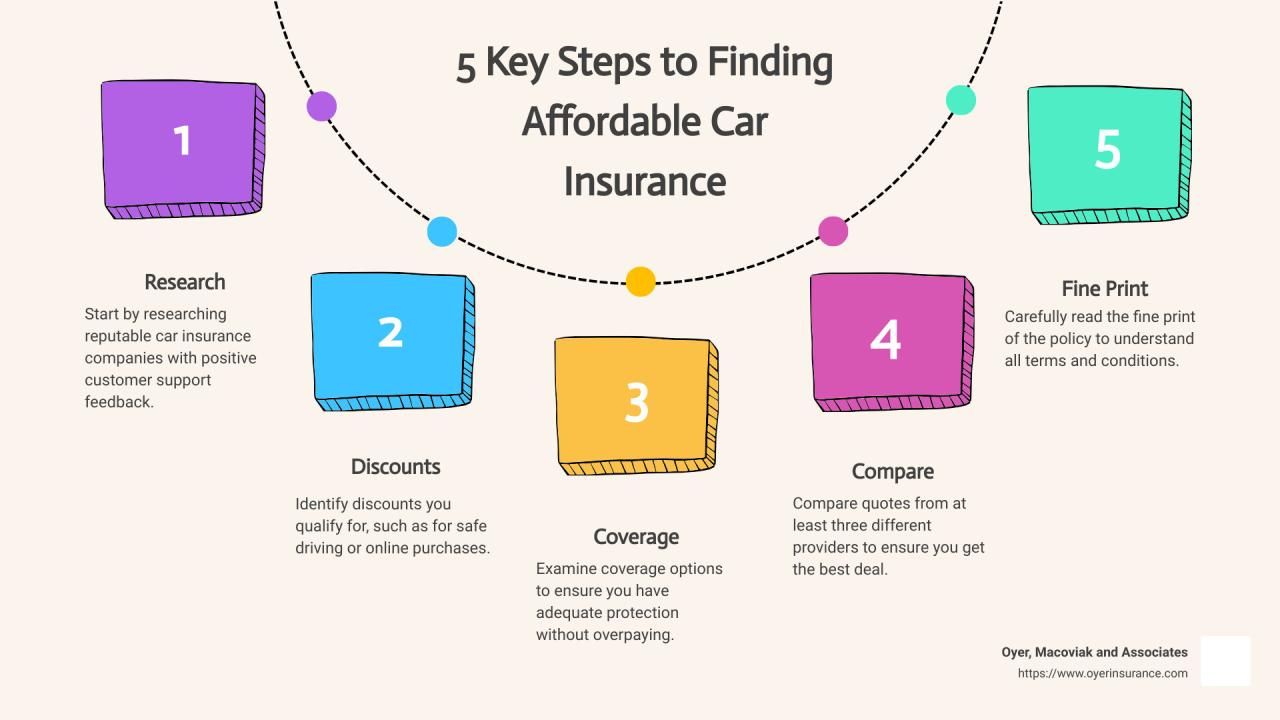How to Find the Best Car Insurance with the Lowest Rates” – How to Find the Best Car Insurance with the Lowest Rates sets the stage for this exciting journey into the world of car insurance. Whether you’re a new driver or looking to save on your premiums, understanding how to navigate the options available can save you time and money. Car insurance is not just a legal requirement; it’s a vital safety net that protects you and your investment on the road.
With countless providers and policies out there, it’s essential to know how to sift through the choices to find the one that offers the best coverage without breaking the bank.
In this guide, we will explore the nuances of car insurance, from understanding different types of policies to employing effective strategies for finding the best rates. We’ll delve into the factors that affect pricing and discuss tips on how to compare quotes and coverage levels effectively. By the end, you’ll be equipped with the knowledge to make an informed decision that suits your needs.
In today’s fast-paced world, communication has evolved dramatically, especially with the rise of digital platforms. The art of conversation no longer strictly adheres to face-to-face interactions or traditional phone calls; instead, we find ourselves navigating a myriad of communication channels that include messaging apps, social media platforms, and emails. This article explores the nuances of modern communication and offers insights into how to engage effectively within this digital landscape.
Understanding the Digital Landscape
The digital age has transformed how we interact. Social media platforms like Facebook, Twitter, and Instagram have created spaces where people can connect, share ideas, and engage in discussions regardless of geographical boundaries. Meanwhile, instant messaging applications like WhatsApp and Slack allow for real-time communications that make conversations more accessible and immediate.
However, the convenience of these platforms also brings challenges. The absence of non-verbal cues, which play a crucial role in understanding tone and intent, can lead to miscommunications. A simple text message can be misconstrued without the context provided by body language or vocal inflection. Therefore, being mindful of how we communicate through text is paramount in ensuring our messages are understood as intended.
Embracing Different Communication Styles
One of the key aspects of effective communication is recognizing that different people have varying communication styles. Some individuals prefer direct and concise messages, while others may appreciate a more elaborate narrative approach. Adjusting your style to fit your audience can enhance understanding and foster better connections.
For example, in a professional setting, being straightforward and to the point can often be appreciated, especially when discussing tasks or projects. On the other hand, in more informal contexts, a conversational tone and storytelling may be more engaging and relatable. Being able to switch between these styles is a valuable skill that can help bridge gaps in understanding and foster richer interactions.
The Power of Active Listening
In any conversation, whether digital or in-person, active listening is a crucial component that is sometimes overlooked. Active listening involves fully concentrating on the speaker, understanding their message, responding thoughtfully, and remembering key points. In a digital environment, this can mean taking the time to read messages carefully and asking clarifying questions when needed.
By practicing active listening, we demonstrate respect for the other person’s perspective, which can lead to more meaningful conversations. This practice not only helps in personal relationships but also in professional settings where collaboration and teamwork are vital. Engaging with others in this way encourages open dialogue and fosters a culture of mutual respect.
Managing Miscommunication
Despite our best efforts, miscommunication can still occur. In a digital space, misunderstandings can escalate quickly if not addressed promptly. The key is to acknowledge when a miscommunication has happened and to address it directly. Taking a moment to clarify your intent or to ask for clarification can go a long way in resolving issues before they escalate.
For instance, if a colleague misinterprets a message, responding with something like, “I think there might be a misunderstanding. What I meant was…” can clear the air without placing blame. This approach not only resolves the immediate issue but can also strengthen relationships by demonstrating your willingness to understand and collaborate.
Utilizing Technology to Enhance Communication
With the plethora of tools available today, technology can significantly enhance our communication efforts. Video conferencing platforms like Zoom and Microsoft Teams enable face-to-face interactions, even from a distance, while collaboration tools like Trello and Asana help teams stay organized and aligned on projects.
Moreover, the integration of communication tools within project management software can streamline interactions, allowing team members to discuss tasks in context. Using emojis or GIFs in messages can also add a light-hearted element to conversations, making them feel less formal and more engaging. However, it’s essential to gauge your audience when incorporating these elements, as not everyone may appreciate them in a professional context.
The Importance of Empathy in Communication: How To Find The Best Car Insurance With The Lowest Rates”
Finally, empathy is an essential component of effective communication. In a world where digital interactions can feel impersonal, showing empathy can help humanize our conversations. Acknowledging the feelings and perspectives of others, especially when discussing sensitive topics, can create a more compassionate dialogue.
For example, if a friend shares their struggles on social media, responding with understanding and support can strengthen your relationship. Similarly, in a workplace setting, recognizing the challenges a colleague may be facing can foster a supportive environment where everyone feels valued. By approaching conversations with empathy, we can build trust and encourage open communication.

Conclusion: Mastering the Art of Communication
As we continue to navigate the complexities of communication in a digital age, mastering these skills will become increasingly important. By understanding the digital landscape, embracing different communication styles, practicing active listening, managing miscommunication, utilizing technology, and fostering empathy, we can enhance our interactions and build stronger connections with those around us.
Whether in personal relationships or professional settings, effective communication is a vital skill that can lead to more fulfilling interactions and successful collaborations. As we embrace these principles, we not only improve our conversations but also contribute to a more understanding and connected society.



